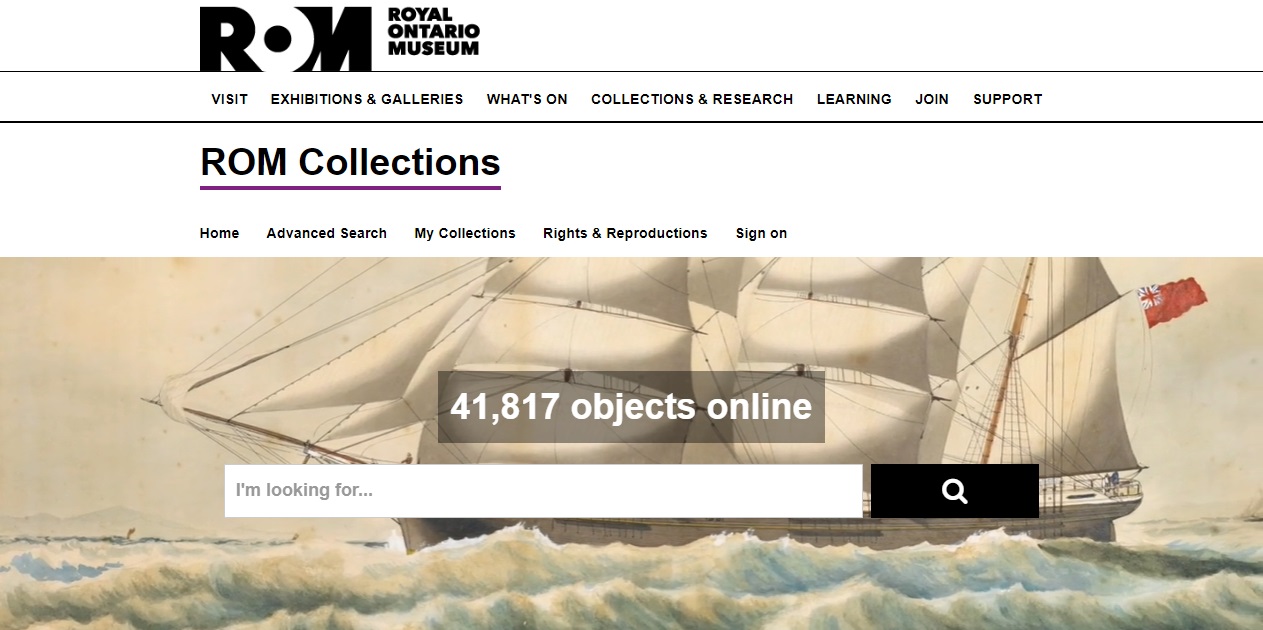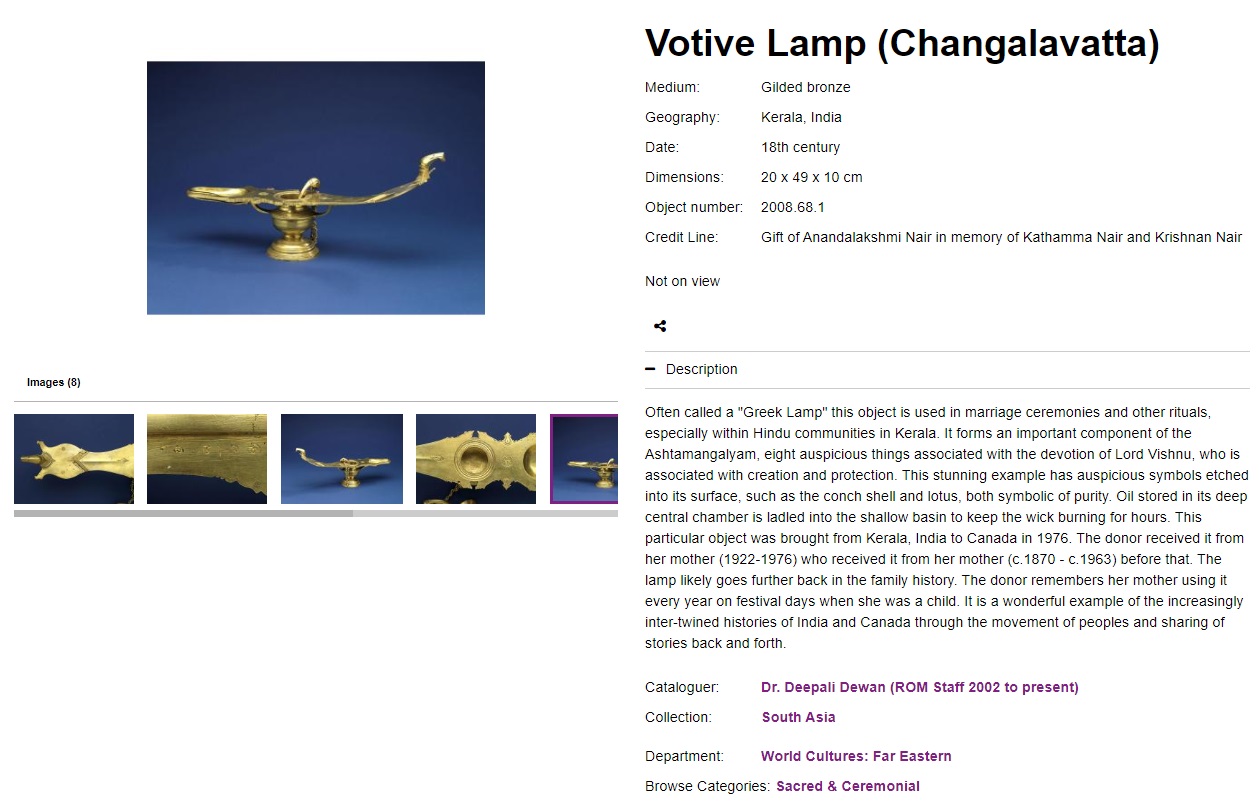 (Retrieved from the ROM's online collection here)
(Retrieved from the ROM's online collection here)
Museums function as educational institutions at their core and represent important vessels to transmit history and culture to their communities. However, behind the scenes there are careful considerations and decisions made about what information to share and how to do so.
These considerations have never been more important in a time when museums across Canada are attempting to digitize their artifacts and share them with the public on online databases, such as the online collection from the ROM (Royal Ontario Museum). Among the myriad of records, it can be challenging to navigate how to complete a record for public consumption. However, these are extremely important questions as it will determine your focus, navigate your research and ultimately save precious time. This blog post will give a short cheat sheet on what information to share about a museum’s collection with the public.
DON’Ts:
- Confidential information about the donor, such as their address or contact information for the sake of privacy.
- The estimated monetary value of artifacts as this may act as a guide of what artifacts a thief should target.
- The location of the artifact as this will act as a blueprint for where to find an artifact that a thief might want to steal. This is a matter of security.
- It is ill advised to publish irrelevant or excessive information about an artifact. This will only serve to bore the public with pages upon pages of irrelevant information.
DOs:
- Ensure all relevant fields are filled in consistently as it may impact the compatibility and searchability of your record
- Humanize the artifact by telling stories about particular people associated to an artifact. Recording this point of interest makes history become a real thing that affected real people and less like a page out of a dusty history textbook.
- Explain what the artifact can tell us about a larger history. I often call this the “so what” element of an artifact. Why should I can about this artifact? What can it tell me about a larger history?
- As most museums in Canada are at least partly funded publicly, it is incredibly important to remain transparent and explain implicitly or explicitly why a museum has chosen to purchase or accept a donation.

(Retrieved from the ROM's online collection here)
Take the example of the above record released by the ROM:
- It has not included confidential information
- It has not included a valuation of the artifact
- It has not included the location of the artifact
- It has limited its description to concise and relevant information related to the artifact
- All relevant fields have been entered so that whether someone is searching for the subject matter, collection, or even cataloguer, the record is easily accessible
- The record has humanized the artifact by discussing what this artifact meant to the donor's family
- The record has contextualized the artifact by explaining what this artifact can tell us about a larger history of Hindu worship
- The record has justified the artifact’s presence in the Museum’s collection as an important part of the Indian Canadian story
This list of is by no means complete and will undoubtedly differ from institution to institution but keeping these things in mind as a general rule is a helpful way to at least focus your thoughts when producing records for online consumption. In this way, museum professionals hope that their work can make an impact on the public be it as an education resource, a steppingstone for further research or simply as a source of nerdy entertainment.
To view the ROM’s entire online database, see: https://collections.rom.on.ca/
To view other online museum collections, consider viewing some of these: https://www.metmuseum.org/art/collection, https://www.si.edu/collections, https://www.historymuseum.ca/collections/ … and that’s only a few!
To read another blog about a museum professional asking some more difficult questions about navigating a museum’s online presence, see: https://blog.prototypr.io/navigating-the-museum-online-4b1e5e51d01
